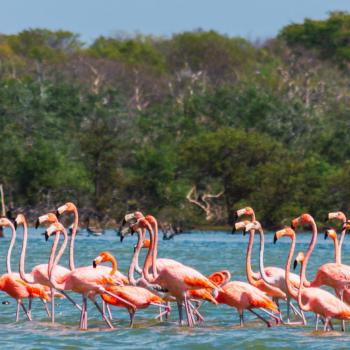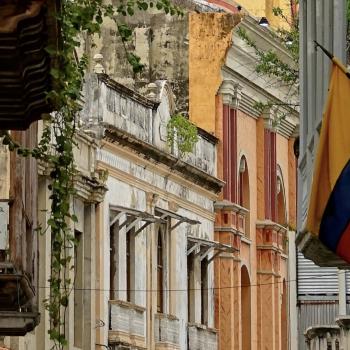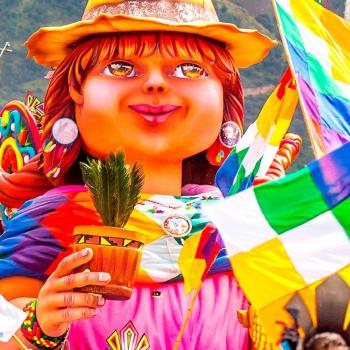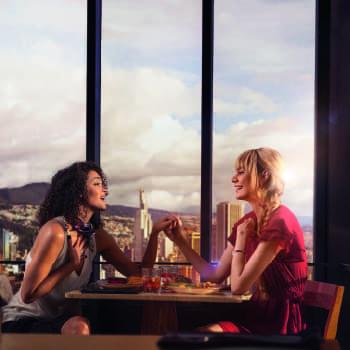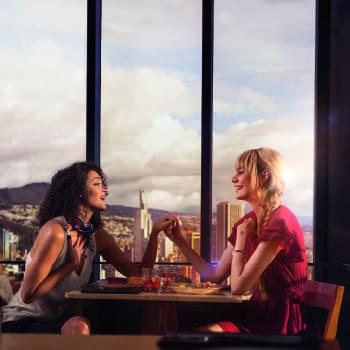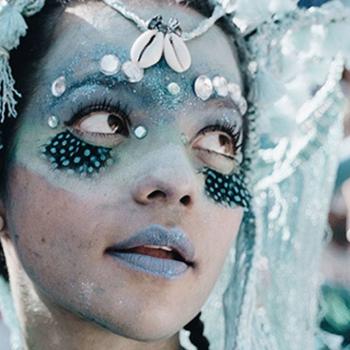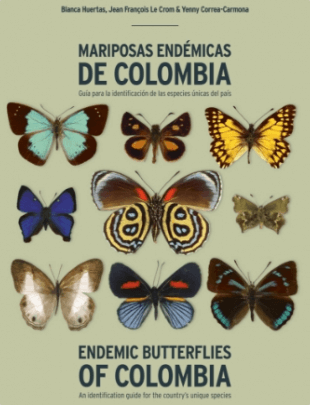Diverse Capital
The Colombian capital offers a wide range of cultural and entertainment experiences focused on the LGBT community. A resident of the capital shows the world the way she discovered this diverse city.
In recent years, the capital of Colombia has been open to everyone. But it was not always so easy to find the spaces where to find uourselves. A little over twenty years ago, when I was eighteen and fell in love for the first time with a woman, along with a male friend who had also fallen in love with a man, I began to look for a place where we could be close to others like us. We both felt like two lonely boats drifting on the high seas. There were still many years ahead for the development of a whole range of experiences focused on the LGBT community. All the people around us—university classmates or friends who would appear down the road—were straight (or so they said), and since we were configured from the cradle in a masculinity and femininity defined in exact terms and with precise limits, we needed to see each other reflected in others like us to really understand who we were.
He was gay and I was a lesbian. Our newly accepted sexual preferences defined us that way, but we didn’t know what that was, what that entailed. Gay and lesbian. Those two words led us to Chapinero, the neighborhood that today continues to be an icon of the community, despite the fact that in a city of more than ten million inhabitants, gay nightlife exists in all locations.
I must say that he was more lucky than I was. In the late nineties, Chapinero was full of gay bars and there were only two lesbian bars. Although the vast majority of gay bars denied entry to women, my friend and I found spaces where we could hang out. For a couple of years and until the arrival of the 21st century, I often wondered where the others were, the girls around my age. Twenty year-old lesbian girls. Where did they meet? How and who were they? The picture was really bleak. A couple of girlfriends here and there, other girls scattered among gay groups, the vast majority heterosexual friends who accompanied them.
Along with my friend I began to make other male friends and they brought other female friends little by little, and so I continued, patiently, from bar to bar, as one who expects a revolution. One day I opened my eyes and realized that gathered around the fireplace of one of the bars we frequented, there were as many women as men. It was the year 2002 and the girls of my generation had massively begun to party—the miracle I had waited for a long time. It was in the bars, in those spaces destined for talking, flirting and dancing, that I began to create connections that transcended the night, I made friends, fell in love many times and had the feeling that our sorority and our romantic relationships were not different from those of others. The illusion lasted until we moved into public space, where we let go of our hands and acted as the friends we were told to be. Public expressions of affection for the LGBT community in Bogota were banned. The strong social condemnation and fear pushed us to it.
I left the country for several years and when I returned, in 2009, the landscape had begun to change and it was precisely the hands of the people that showed it to me: on the streets of Bogota, girl couples, boy couples, walked along them. The image that at first glance might seem insignificant, had great symbolic power. That same year the City Council approved the Policy to guarantee the sector’s rights and consolidate developments in all institutional agencies, and the conservative city of Bogota had to incorporate in its idiosyncrasy the existence of a community that had rights and that like any another citizen, expressed not only its affection, but its desire to belong and be fully accepted. And the space to do so was not reduced to the bars but moved to all areas, including those of artistic creation as a vehicle of expression and reaffirmation.
I have lived with my partner for 11 years now. The city I knew, the one in which I had to publicly pretend to be just friends with my partners, no longer exists. Holding hands, a gesture that for years constituted a political act for us, became as natural as breathing. It’s our way of traversing this sector of the city in which we live. Our apartment is located in La Macarena, a neighborhood that survives—along with just a handful—in a city as large as Bogota, full of small local restaurants (we don’t have a single chain restaurant), cafes, bakeries, natural and organic products stores, several art galleries and a bookshop cafe. We are framed by the eastern hills and if the sky is clear, we always see the Church of Monserrate above our heads. The market square of La Perseverancia is nearby, there we do all our shopping. We know each of the fruit, flower and vegetable vendors, as well as the cooks of the square that is a benchmark of the traditional Colombian cuisine.

La Candelaria, the historic district, is a fifteen-minute walk away. The vast majority of museums and historical monuments are located there, but it’s also the place where it seems possible that everything, without distinctions and categories, coexists, the proof that if something doesn’t exist in Bogota it’s uniformity. The Seventh Avenue, from the 21st street to Plaza de Bolivar, is for pedestrian use only, and if you walk through it you’ll meet vendors, indigenous people, rappers, metalheads, punks, football fans, people dressed up as statues, office workers, students, housewives, tourists, musicians, breakdancers, tango and salsa dancers, portraitists and painters who make great chalk drawings on the cement floor on the cement floor, couples of men, couples of women, families of all kinds experiencing the city. A relentless visual and auditory explosion that stimulus after stimulus makes us understand the hybrid nature of this city inhabited by people from all over the country.
We experienced together the entire city, and although it’d be absurd to say that in Bogota (or anywhere in the world) discrimination against the LGBT community doesn’t exist, I could say that those who belong to it have stopped hiding and that this action has had a strong impact in the cultural activity that is growing on a yearly basis.
Proof of this is the massive call that the LGBT Pride March had this year, held every June since 1996, and which showed the strength that the community has acquired. Three fronts: the LGBT Roundtable of Bogota, the LGBT Roundtable and the Trans Community Network, managed to bring together people from all sectors of the city who walked together from the National Park to Plaza de Bolivar. The first demonstrations I attended at the end of the 1990s were very small and seemed to be reserved for only some sectors of society, or rather, the most correct thing would be to say that the upper and middle classes didn’t participate in the march because their class prejudice led them to think that they didn’t want to be identified with the trans community, nor the activists who since that very year were advocating in our favor. This year, I saw families of all social classes marching and alongside were several of my straight friends, carrying flags and singing encouraging chants that celebrated diversity.

Bogota’s nightlife is one of the city’s main appeals. In addition to restaurants of all cuisines, cafes and bars, parties are experienced intensely through many rhythms. Bogota nights are open to everyone.
For two years, the Festival of Equality has also been held during the month of June, a space where cultural and sports activities are carried out, seeking to promote civic culture based on the recognition, guarantee and restoration of the right to a life free from violence and discrimination based on gender identity and sexual orientation.
Film and literature festivals are another means of expression. In 2019, the 19th annual Pink Cycle took place, an event that is held every year at the beginning of August, and that in addition to film screenings, hosts training workshops and creative laboratories, as well as performances.
The Bogota International Book Fair, (FILBo), one of the most important literary events of the city, has been operating for several years in partnership with the Department of Sexual Diversity of the Planing Office to open the fair and its programming to sexual and gender diversity, as an artistic, cultural, academic, humanistic and intellectual expression. Year after year, writers, scholars and LGBT activists hold discussions in which gender issues are put on the table to bring about reflections from the artistic dimension and across the breadth of public spaces.
Since I was eighteen, until today, Bogota has become a more inclusive city than the one it was when I was eighteen. The bars in the Chapinero area are are increasingly varied and the vast majority are characterized by having their doors open to all types of audiences. They’re still an important space for community interaction, but they no longer constitute a trench, instead, they’re a sample of how in Colombia partying is a serious matter. Although the largest club for the community in Latin America is located in the neighborhood, the area is filled by all kinds of bars. Through the doors you can hear salsa, merengue, battles, electronic music, indie rock, classical ballads in Spanish and English, reggaeton, champeta.
There are bars that specialize in a type of music and audience, such as bear bars, but what dominates the scene is the “crossover”. Many of the bars have drag and cabaret shows. The drag movement in Bogota is legendary and voguing is increasingly booming, thanks to groups such as Las Tupamaras, who even participated in 2019 at the National Artists Hall.
The LGBT community has taken over the city. The offer has extended to restaurants, bars and clubs around the entire city; as well as literary festivals and artistic and cinematographic exhibitions. We’re a diverse community that has resisted being isolated and discriminated against. There’s still a long way to go, but the efforts of many activists who have worked and continue to work for the rights of the community; as well as the attitude of those who belong to it, have been forging a reality in which we’ve been learning to coexist with our differences, in an open fashion.
In the Cuir Seminar: Community Resignifications, organized in September 2019, by the alliance between La Esquina, Trans Community Network Purple Train Arts, and Las Callejeras groups, to which I was invited to talk about Donna Haraway’s cyborg feminism, the idea of exchange as the basis of human communication took on new meaning for me. Immersed as I’ve been in the dynamics of the LGBT community since I came to live in Bogota, I had not stopped to think about how the barriers that have historically kept the community divided, thanks to initiatives like these and as a result of the Public LGBT Policy—which has been in operation for 12 years—have changed the landscape of the community’s life in the city, creating spaces for interaction and dialogue that are increasingly diverse; less and less divided.
The cosmopolitan capital of art, gastronomy and exciting nightlife is also the capital of diversity. There are plenty of reasons for everybody to meet in Bogota.
Text by Andrea Salgado








